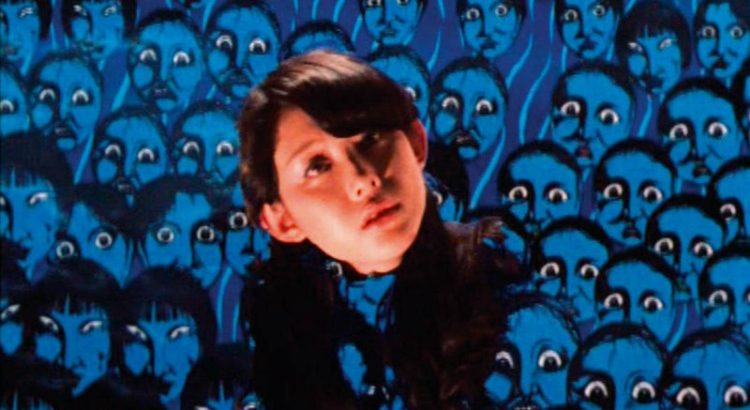When I first heard about Nobuhiko Obayashi’s 1977 film House, I read that it was intended to be Japan’s Jaws. This comedy-horror gem may not have accomplished that, but it cemented itself as a cult classic nonetheless. It’s been described as a fever dream, an experience, and a “candy-colored style bomb” (seanax.com). At the same time, it’s been called indescribable. So what is the experience of House?
In essence, House is a summer vacation gone wrong. The main character, Gorgeous, and her friends Melody, Fantasy, Kung Fu, Prof, Mac, and Sweet (all named after their most prominent character trait) go on a trip to get away from Gorgeous’ creepy new stepmom. As soon as they arrive at Gorgeous’ aunt’s house, things instantly feel off. I won’t give away the plot, but there’s definitely not a happy ending.
House is one of those films where the style surpasses the substance, but that’s the entire point. It isn’t something to passively watch for entertainment. The plot heavily relies on the viewer picking up on hints throughout the film (make sure to take notice of the cat). It can get pretty confusing at times, especially near the end. However, the plot isn’t the reason I’m in love with this film. There is no other film that looks like House. It’s pretty hard to describe what happens, and the only way I can describe it visually is “Scooby Doo-esque Suspiria”.
The strangest and most amazing aspect of House is the editing and visual effects. Certain moments look like a tragic-yet-magical collage. Body parts spin across the screen, heads change color and float, and people turn into fruit in the blink of an eye. Not only are these effects impressive but the film’s use of color is absolutely dazzling.
The way Obayashi incorporates drawings, transparent layers, and missing images is worth the watch. After watching, I had to research how the filmmakers pulled off many of the special effects. For 1977, the editing is way ahead of its time.
Though the plot goes a bit off the rails, the themes of the film come through well. House is about war, friendship, family, and the magic of childhood. Obayashi reportedly spoke with his daughter, Chigumi, while writing the script, and many of her ideas were included in the film.
Chigumi contributed her own childhood fantasies and fears. The balance between fantasy and fear is a very fine line in House, which makes for a mind-melting mix of emotions as a viewer. Should you laugh? Should you scream? Which character should you feel bad for? This film will leave the viewer with lots of questions, but that’s the best part. As soon as it was over I already wanted to watch it again, hoping that I would get some answers (spoiler alert: I don’t think I’ll ever get them).
Though House may still be relatively unknown to the general public, it is the ultimate cult classic. I highly recommend it to anyone who has seen it all and is look for a film unlike any other. If you get the chance, get ready to experience childhood nightmares at their strangest through Obayashi’s masterpiece.





Leave a Reply
Be the First to Comment!